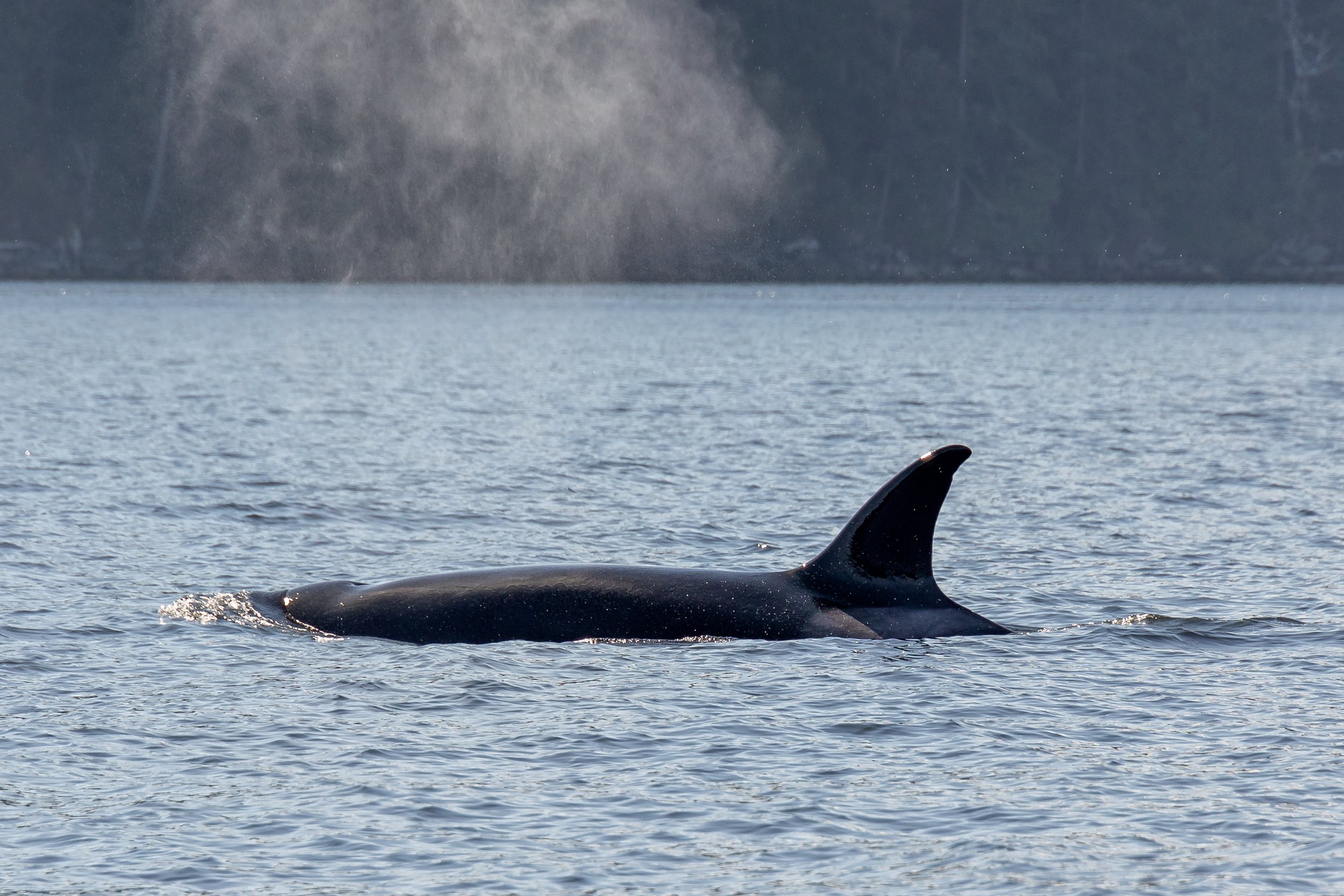September 29th - Orca hunting in the Southern Gulf Islands and four humpbacks
We left the harbour with two of our vessels today heading towards a report of some transient orca right outside Nanaimo! By the time we found them they had made their way through false narrows (a very shallow passage between Mudge island and Gabriola Island) and they were heading south along the Valdes shoreline. The group we found was two different pods travelling together: the T065As and the T099s! The members of these two pods that were present today according to our photos were:
T065A Artemis (1986)
T065A3 Amir (2007)
T065A4 Ellifrit (2011)
T065A6 Callisto (2018)
T099 Bella (1984)
T099B Holly (2007)
T099C Barakat (2009)
T099D Puck (2015)
T099E (2021)
The T065As have had a lot of their family members coming and going lately, with Ooxjaa (T065A2) travelling away from his mom as well as T065A5 Indy travelling alone. This isn’t uncommon to see with the transient orca and most of the time the young whales will return to keep travelling with their family at some point in the future. Amir was also away from the family at the start of this year, travelling with another juvenile male, Jude, throughout the Salish sea. It seems that this party is over now and it’s back to his roots.
While we were watching these two groups they were spread out across Pylades Channel, usually a good indicator that they are on the prowl for food. It wasn’t long until they stumbled across a little harbour seal and the hunt was on! Orca are very efficient hunters, even with their large size. What they lack in speed and maneuverability, they make up in power and teamwork. These 9 whales worked together and were easily able to take care of this seal before continuing their travels.
After watching the orca we headed south to Porlier Pass and into the Strait of Georgia where we saw a single humpback whale in the distance. It was Tempest (BCX0837)! Tempest seems to have gotten herself into some trouble in the last little while as there are a couple of big new scars on her tail flukes! You can look at the link to happy whale and see what her fluke used to look like and compare it to our photos from today. Can you spot the new scars on the right?
While watching Tempest we noticed more blows in the distance and decided to head that way, finding Anvil (KEZ0002) and her 2022 calf! These two were also having a great time travelling together and feeding in the strait. The calves will only spend the first year of their lives with their mom and will be feeding solely off their mother’s milk for the first few months of their lives. After that their mom will be teaching them how to hunt and capture food for their own, slowly weaning them off the milk. By the time they’re ready to migrate south to the breeding grounds the calf is nearly independent. At this point, Anvil’s calf is probably catching its own food and only having to supplement with milk. It’s important to learn to be efficient in their feeding since when they travel south, humpbacks don’t eat. They instead survive off their fat reserves that are built in our waters over the summer.
The very last whale seen for the day was a quick look at Strike (KEX0045) who was still hanging out in her regular spot for this year.
Overall we were lucky to get to see both species of whale during this trip, as well as the rest of the amazing wildlife around the Salish Sea. Please enjoy the photos from the tour taken by Marine Naturalists Aly Kohlman and Vanessa Vereschahen.
Artemis (T065A). Photo by Aly Kohlman.
Artemis (T065A). Photo by Aly Kohlman.
Barakat (T099C). Photo by Aly Kohlman.
Holly (T099B). Photo by Aly Kohlman.
Holly (T099B) front, and Puck (T099D) back. Photo by Aly Kohlman.
Holly (T099B) front and Ellifrit (T065A4) back. Photo by Aly Kohlman.
Ellifrit (T065A4). Photo by Aly Kohlman.
Left to right: Amir (T065A3) and his sister Ellifrit (T054A4). Photo by Aly Kohlman.
Ellifrit (T065A4) and Amir (T065A3). Photo by Aly Kohlman.
Tempest (BCX0837). Photo by Aly Kohlman.
Photo by Aly Kohlman.
Anvil (KEZ0002). Photo by Aly Kohlman.
Photo by Vanessa Vereschahen.
Bella (T099), Callisto (T065A6), and Artemis (T065A). Photo by Vanessa Vereschahen.
Left to right: T099E and Artemis (T065A). Photo by Vanessa Vereschahen.
Bella (T099). Photo by Vanessa Vereschahen.
Artemis (T065A).Photo by Vanessa Vereschahen.
Barakat (T099C). Photo by Vanessa Vereschahen.
Photo by Vanessa Vereschahen.
Barakat (T099C). Photo by Vanessa Vereschahen.
Cormorant. Photo by Aly Kohlman.
Photo by Vanessa Vereschahen.
Backlit California Sea Lions. Photo by Aly Kohlman.
Photo by Aly Kohlman.
























